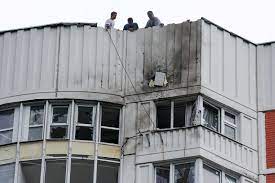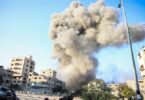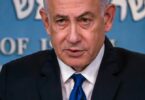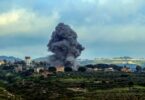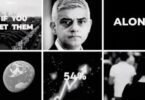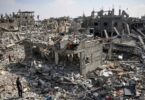Michael Bociurkiw
Those expecting that the upcoming Ukrainian counteroffensive will be a shock and awe bombing campaign similar to the 2003 US strikes on Iraq will be disappointed. To be sure, there is a sort of unspoken pressure on the administration of Ukrainian President Volodymyr Zelensky to press ahead with its planned counteroffensive as soon as possible – and demonstrate that the billions of dollars of Western military aid is capable of pushing Russian President Vladimir Putin at least back to pre-2022 full-scale invasion lines.
Ukrainian leaders and military planners need also to be mindful of developments across the Atlantic, where its most powerful ally, the United States, could see the return of Donald Trump in 2025 to the White House – and with that, a likely drop in support.
Yet Kyiv seems to be playing cagey, implementing a long-range view of the counteroffensive, avoiding being pressured into action and keeping battlefield plans close to its chest. We already know Zelensky needs time to build up weapons stocks and to train troops.
But make no mistake. The much talked about counteroffensive is increasingly coming into view – not with an Iraq-style type of invasion – but with subtle and some might say brilliant strikes against Russia. These started last week with a cross-border attack from anti-Putin Russian nationals in the Belgorod region, followed by strikes from Ukrainian armed forces on the Russian-occupied port city of Berdiansk.
Later in the week, US officials shed new light on the alleged drone attack on the Kremlin on May 3, claiming it was likely carried out by Ukrainian military or intelligence. Then on Tuesday morning a drone attack on the Russian capital brought the conflict to Russian soil with fresh clarity. Moscow blamed Ukraine for what it described as a “terrorist attack,” while Kyiv denied involvement in the strike, which caused minor damage and injuries.
Whoever is to blame, one thing was for certain: it gave Moscow residents a taste of what people in the Ukrainian capital are facing day after day. Indeed Russia continues to pound Kyiv with almost daily strikes – including terrifying drone attacks on Kyiv Monday and Tuesday morning, with the latest killing one and injuring at least three others.
But it was the incursion by two anti-Kremlin groups which claimed to have controlled, at least temporarily, 16 square miles of Russian territory last week, that set Ukrainian Telegram channels on fire. Claimed to be acting independently of Ukrainian forces, the combatants’ provocation prompted a major evacuation and represented the most intense fighting inside Russia since the start of the full-scale invasion of Ukraine.
There are clearly chinks in Putin’s armor. Should these types of disruptive attacks increase in frequency and spread to other regions within Russia. One might speculate that they could lead to a tipping point for Putin’s hold on power. The aim here appears not to actually occupy Russian land – but to send a message to Putin and the Russian public that the Ukraine war is a waste of blood and treasure.
There are more reasons for Russia to worry. With the acquisition of long range cruise missiles with stealth capabilities, such as Britain’s “Storm Shadow” missiles that can travel 155 miles, Kyiv now has the ability to strike well into Russian occupied territory and even into Russia itself. It’s way beyond the 49 mile capability of US-provided missiles. While such a scenario may make officials in Washington anxious that it could escalate matters, European officials seem to be looking the other way as Kyiv becomes more aggressive in their shortlisting of Russian targets. What is more, if Ukrainians are prevented from striking key military sites deep within Russian territory, then the question has to be asked: What is the point of this David and Goliath fight with one hand tied behind Kyiv’s back?
The latest incursions, if they were associated in any way with Kyiv, were executed with brilliant timing as they occurred when Russian forces are pre-occupied elsewhere along the frontline trying to gain territory and defend occupied lands. The Russian Volunteer Corps (RVC) and the Freedom of Russia Legion appear to be Russian volunteers backing Ukraine and with the intent to topple Putin. Unlike the RVC, the Legion claims to be fighting under the leadership of Ukrainian command and “out of the wish of Russians to fight in the ranks of the Armed Forces of Ukraine against Putin’s armed gang.” Just as word began to circle the globe about these two insurgent groups who had little name recognition – even among those of us who follow the region closely – the New York Times published a piece about the affiliation of a leader of the RVC to neo-Nazi splinter groups.
If proven true, it could be used by the Kremlin spin machine to paint Ukraine as a haven for Nazis, one of the false pretexts for the invasion. Wisely, Zelensky and his inner circle have remained mostly quiet about the incursions. It is almost impossible to determine how big a threat, if any, the incursions represent to Putin. But it is hard to believe that the man who is reported to be traveling around his country in an armored train carriage instead of the presidential airplane is having restful nights, especially since the war has been going anything according to plan.
Even Wagner boss Yevgeny Prigozhin warned last week that Russians might move to topple the regime if the so-called “special military operation” continues to go sideways. What is perhaps likely in the short term, is that Russia will use a hybrid strategy to attack Ukraine and make life uncomfortable for the West. That means a continuation of the daily strikes on Kyiv and other major centers (which, by depriving residents of sleep, is a form of psychological warfare); the weaponization of food by restricting ships carrying grain and other agricultural products from Ukraine to western markets; and even the weaponization of migration by creating enough fear from drone and missile attacks to prevent the millions of Ukrainians refugees from returning home. It is reasonable to assume that Putin will not end this war voluntarily, by submitting to a ceasefire or peace deal. Rather, Putin appears to believe he can win by running out the clock. Collateral damage has never been a concern for Putin, only his own safety and power. Now, it seems the buffer between Moscow and the frontline, is rapidly shortening. And with the war he started getting uncomfortably close, I believe Putin’s days in office could be numbered as well.
CNN

